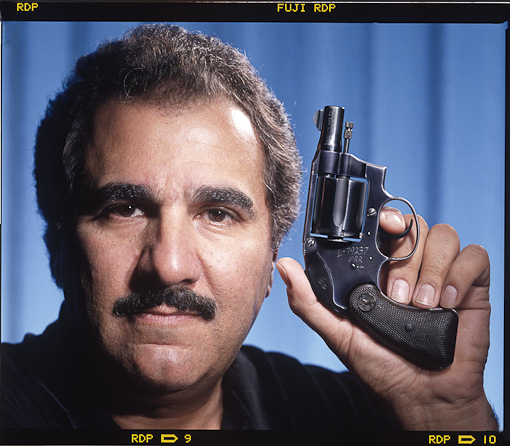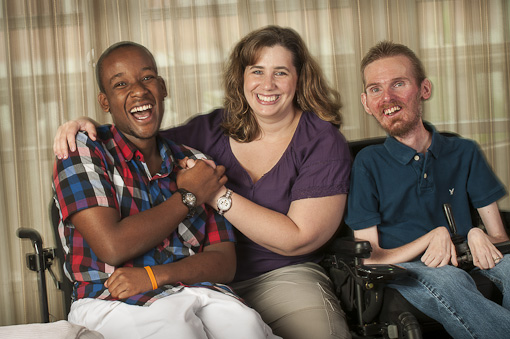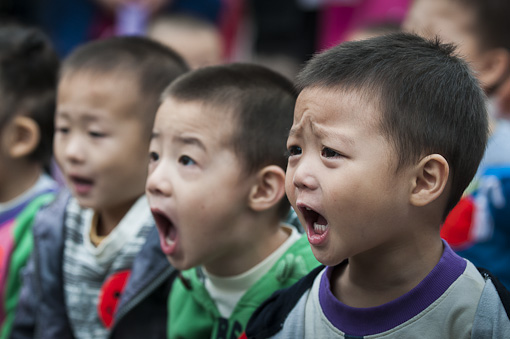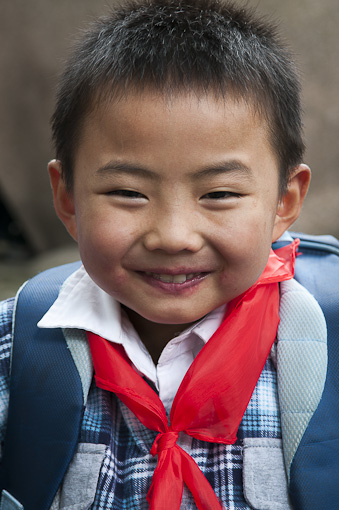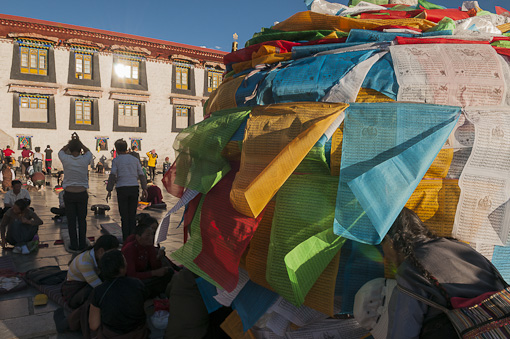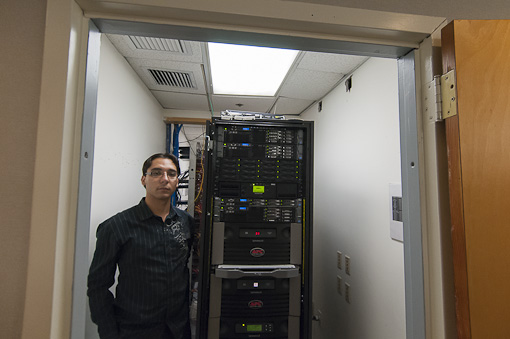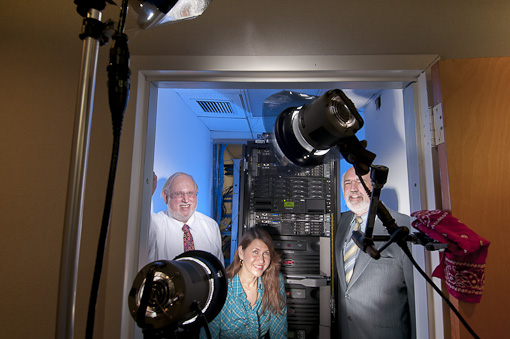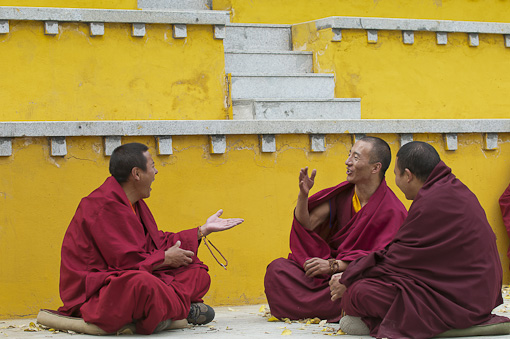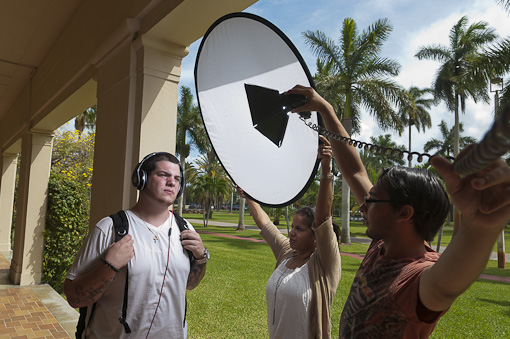I've just returned from giving a location lighting demonstration at the
Art Institute in Ft. Lauderdale, FL, where I introduced the photography students to making interesting environmental portraits out of just about any drab location that assignments can throw at them. They've learned formulas for light placement and lighting ratios by working in the blank slate environment of a photography studio, but are just beginning to venture into the real world with their cameras.
They peppered me with detailed questions about my "work flow" for creating an environmental portrait on assignment for magazines and corporations, so I've decided to write my answers down for the next class ... I'll just have their teacher, Steven Nestler, share this blog link and I can stay home next
time. ( Insert smiley face here. )
Veterinarian Dr. Albert Williams of the Arch Creek Animal Center, North Miami Beach, FL, an environmental portrait for credit card processioning services advertisement in "Costco Connection" magazine, to be published in March.
- After receiving an assignment via email or telephone, I ask my client what look and feel they are after, do they see examples on my web site, do they have any layouts for art direction?
- What is your deadline? Do you want to select from web galleries, deliver master files to your FTP site or mine? File size, format, color space?
- We discuss budget and the usage they wish to license. Confirmation emails or written contracts are exchanged.
- For future marketing, I'll find out how they found me, internet search, portfolio portal, or email promotion.
- I'll research my subject's company by visiting their web site, view photos of my subject, their facilities, read enough so I have a working knowledge of their business.
Assistant Steven Morse holds an invisible dog and sits in for vet. Main light for environmental portrait is 60 inch PhotoTek umbrella with front cover, set to underexpose white lab coat about 1.5 stops. Far left is 5 degree grid spot opening up Dr. Williams' face. Upper right corner, Chimera strip light rims Dr. Williams' face and shoulder. Behind Steven is a floor light, aimed straight up far wall. And slow shutter exposes for two operating room spots.
- Then I'll telephone my subject or their assistant, introduce myself, enthusiastically describe the project, get them invested in the photo shoot. We will discuss potential locations, what they look like, how the sun falls, do we need to reserve the board room.
- Details are important. Who has the keys to the roof? What time do the lawn sprinklers come on? Where is the fuse box? Where can I park? Phone number of person who authorized this? Do they need a certificate of insurance?
- We're discuss the subject's wardrobe. Avoid stripes and polka dots, white shirts, Grateful Dead t-shirts. Women usually know how to do their own hair and makeup, but I suggest men wash their faces for shine and freshen up their shave.
- I rarely scout a location in advance, as budgets are so tight that I can't afford the time.
- I'll pack up my cameras and lighting gear, and brief my assistant on the job in the car.
- No, since the recession hit I rarely have the budget to work with an assistant. Yes, I work with
students who will work for free in exchange for the learning experience and a cheeseburger. I'll explain I can't offer an internship due to strict enforcement of labor laws.
Dr. William's operating room awaits photographer's lighting magic, while I get distracted with
newly developed no-feed pet.
- I arrive on location around two hours in advance, less if I can drive right up and work out of the back of my SUV, such as an outdoor portrait, or a little more if I have to look at multiple potential locations spread around a large facility.
- I introduce my self, get a quick peak at my subject or ask for a photo, determine if they have hair, are bald, how tall are they, do they wear glasses, all factors in how I set up my lights.
- I'll compose my portrait around a story telling element if I can, a soaring land fill behind a civil engineer, eye catching green oxygen bottles for a story on home medical equipment. With lawyers and business managers, I'll find interesting light from a large window, an architectural detail to anchor the photo. Sometimes, I create interest in a blank hallway or room with dramatic lighting alone.
- Almost all my portraits are shot between 28mm and 85mm equivalent on APS sensor Nikon D300s, and lit with four or five Dyna-Lite heads and about 1000 watt seconds or less.
- No client has ever asked what brand of gear I use, they just want great images. Frankly my clients don't pay enough for me to spend top dollar for high end gear, and the web, magazines nor annual reports can reproduce the difference.
- My assistant, the PR representative or an officer worker will sit in as I finalize my light and test my
concept.
- With my subject on set, I explain my concept, take several test frames or two so I can quickly adjust my
lighting. I will share the image on the back of my camera with the subject only if necessary to sell
my idea or settle their nerves.
- I can shoot from 10 minutes to over half an hour, depending on the number of variations I need and the subjects's mood.
- Once complete, I thank them for their extra effort, assure them they look will look great in print, and start packing up.
- After delivering master files, I follow up three or four days later by email to make sure my client received everything they expected. If they are happy, great. If some detail got overlooked, I immediately address their concern head on.
- Following up a couple of weeks later with a hand written thank you note on a custom greeting card
featuring your persoanal work is priceless.
Students, that's all the wisdom I've got for you today, so now it's your turn to go out there and create some killer portraits!
Examples of
Miami corporate photography can be viewed on my portfolio site.



